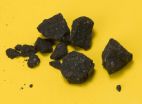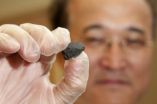(Press-News.org) New York, NY (December 20, 2012) — Two recent experimental treatments — one involving skin-derived induced pluripotent stem (iPS) cell grafts, the other gene therapy — have been shown to produce long-term improvement in visual function in mouse models of retinitis pigmentosa (RP), according to the Columbia University Medical Center (CUMC) scientists who led the studies. At present, there is no cure for RP, the most common form of inherited blindness.
"While these therapies still need to be refined, the results are highly encouraging," said Stephen H. Tsang, MD, PhD, associate professor of pathology & cell biology and of ophthalmology at Columbia University Medical Center and an ophthalmologist at NewYork-Presbyterian Hospital/CUMC, the leader of both studies. "We've never seen this type of improvement in retinal function in mouse models of RP. We hope we may finally have something to offer patients with this form of vision loss."
The stem cell study was published in the journal Molecular Medicine. The gene therapy study was published in Human Molecular Genetics.
RP encompasses a group of inherited eye diseases that cause progressive loss of photoreceptor cells, specialized neurons found in the retina. While RP can appear during infancy, the first symptoms typically appear in early adulthood, beginning with night blindness. As the disease progresses, affected individuals lose peripheral vision. In later stages, RP destroys photoreceptors in the macula, which is responsible for fine central vision. Mutations in at least 50 genes have been found to cause the disease, which affects about 1.5 million people worldwide.
In the Molecular Medicine study, the CUMC researchers tested the long-term safety and efficacy of using iPS cell grafts to restore visual function in a mouse model of RP. Like embryonic stem cells, iPS cells are "pluripotent" — that is, they are capable of developing into any cell type. However, iPS cells are not derived from embryos but from adult cells, in this case from human skin cells. The cells were administered, via injection directly underneath the retina, when the mice were five days old.
The iPS cells assimilated into the host retina without disruption, and none of the mice receiving transplants developed tumors over their lifetimes, the researchers reported. The iPS cells were found to express markers specific to retinal pigmented epithelium (the cell layer adjacent to the photoreceptor layer), showing that they had the potential to develop into functional retinal cells. Using electroretinography, a standard method for measuring retinal function, the researchers found that the visual function of the mice improved after treatment and the effect was long lasting. "This is the first evidence of lifelong neuronal recovery in an animal model using stem cell transplants, with vision improvement persisting throughout the lifespan," said Dr. Tsang.
In 2011, the FDA approved clinical trials of embryonic stem cell transplants for the treatment of macular degenerations, but such therapy requires immunosuppression. "Our study focused on patient-specific iPS cells, which offer a compelling alternative," said Dr. Tsang. "The iPS cells can provide a potentially unlimited supply of cells for functional rescue and optimization. Also, since they would come from the patient's own body, immunosuppression would not be necessary to prevent rejection after transplantation."
In theory, iPS cell transplants could also be used to treat age-related macular degeneration, the leading cause of vision loss among older adults, said Dr. Tsang.
In the Human Molecular Genetics study, the CUMC researchers tested whether gene therapy could be used to improve photoreceptor survival and neuronal function in mice with RP caused by a mutation to a gene called phosphodiesterase-alpha (Pde6α) — a common form of the disease in humans. To treat the mice, the researchers used adeno-associated viruses (AAV) to ferry correct copies of the gene into the retina. The AAV were administered by a single injection in one eye, with the other eye serving as a control.
When the mice were examined at six months of age (over one-third of the mouse lifespan), photoreceptor cells were found in the treated eyes but not in the untreated eyes, the researchers reported. More important, the treated eyes showed functional visual responses, while the untreated eyes had lost all vision.
"These results provide support that RP due to PDE6α deficiency in humans is also likely to be treatable by gene therapy," said Dr. Tsang.
###
CUMC and its teaching-hospital affiliate, NewYork-Presbyterian Hospital, are part of an international consortium that was recently formed to bring this PDE6A gene therapy to patients. Pending FDA approval, Phase I/II clinical trials could begin within a year.
The Molecular Medicine paper is titled, "Stem Cell (iPS) Grafts in a Preclinical Model of Retinitis Pigmentosa." The other contributors are Yao Li (CUMC), Yi-Ting Tsai (CUMC), Chun-Wei Hsu (CUMC), Deniz Erol (CUMC), Jin Yang (CUMC), Wen-Hsuan Wu (CUMC), Richard J Davis (CUMC), and Dieter Egli (New York Stem Cell Foundation Laboratory). This study was supported by the NYSTEM co26448, National Institutes of Health (grants 5P30CA013696 and P30EY019007), Research to Prevent Blindness, the Joan and Michael Schneeweiss Stem Cell Fund, and the Foundation Fighting Blindness.
The Human Molecular Genetics paper is titled, "Gene therapy provides long-term visual function in a pre-clinical model of retinitis pigmentosa." The other contributors are Katherine J. Wert (CUMC), Richard J. Davis (CUMC), Javier Sancho-Pelluz (CUMC), and Patsy M. Nishina (Jackson Laboratory, Bar Harbor, Maine). The research was supported by the National Institute of Health (grants 5P30EY019007 and R01EY018213), the National Cancer Institute (grant 5P30CA013696), Research to Prevent Blindness, the Department of Defense (grant TS080017-W81XWH-09-1-0575), the Foundation Fighting Blindness, the Joan and Michael Schneeweiss Stem Cell Fund, the Barbara and Donald Jonas Family Fund, and the Tistou and Charlotte Kerstan Foundation.
The authors of both studies declare no financial or other conflicts of interest.
Columbia University Medical Center provides international leadership in basic, pre-clinical and clinical research; in medical and health sciences education; and in patient care. The medical center trains future leaders and includes the dedicated work of many physicians, scientists, public health professionals, dentists, and nurses at the College of Physicians and Surgeons, the Mailman School of Public Health, the College of Dental Medicine, the School of Nursing, the biomedical departments of the Graduate School of Arts and Sciences, and allied research centers and institutions. Established in 1767, Columbia's College of Physicians and Surgeons was the first institution in the country to grant the MD degree and is among the most selective medical schools in the country. Columbia University Medical Center is home to the largest medical research enterprise in New York City and State and one of the largest in the United States. www.cumc.columbia.edu
2 novel treatments for retinitis pigmentosa move closer to clinical trials
Both stem cell grafts and gene therapy improve vision in mouse models of this genetic form of blindness
2012-12-21
ELSE PRESS RELEASES FROM THIS DATE:
NASA sees Cyclone Evan blown apart by wind shear
2012-12-21
Cyclone Evan is no more than a remnant low pressure area in the South Pacific Ocean now. NOAA's GOES-15 satellite captured an image of the remnants from its fixed orbit in space on Dec. 20 that showed strong wind shear had basically blown the storm apart.
The last official bulletin by the Joint Typhoon Warning Center was issued on Dec. 19 at 2100 UTC (4 p.m. EST/U.S. or 12:56 a.m. Fiji local time on Dec. 20). At that time, Evan's maximum sustained winds were still near 35 knots (40 mph/64.8 kph) and it had transitioned into an extra-tropical storm. It was located 400 ...
Eighth Landsat satellite arrives at launch site
2012-12-21
An oversized semi-trailer truck carrying NASA's Landsat Data Continuity Mission (LDCM) has arrived at its launch site at Vandenberg Air Force Base in California in preparation for launch. This NASA and U.S. Geological Survey mission will continue a 40-year record of measuring change on the planet from space.
LDCM is the eighth satellite in the Landsat series, which began in 1972. It will extend and expand global land observations that are critical in many sectors, including energy and water management, forest monitoring, human and environmental health, urban planning, ...
Protein kinase Akt identified as arbiter of cancer stem cell fate
2012-12-21
PHILADELPHIA — The protein kinase Akt is a key regulator of cell growth, proliferation, metabolism, survival, and death. New work on Akt's role in cancer stem cell biology from the lab of senior author Honglin Zhou, MD, PhD and Weihua Li, co-first author, both from the Center for Resuscitation Sciences, Department of Emergency Medicine, Perelman School of Medicine, University of Pennsylvania, and Xiaowei Xu, Department of Pathology and Laboratory Medicine, appears in Molecular Cell. The findings were also highlighted in Nature and Science reviews.
This new research shows ...
Discovery of Africa moth species important for agriculture, controlling invasive plants
2012-12-21
GAINESVILLE, Fla. — In the rain forests of the Congo, where mammals and birds are hunted to near-extinction, an impenetrable sound of buzzing insects blankets the atmosphere.
Because it is a fairly inaccessible region with political unrest, much of the Congo's insect biodiversity remains largely undiscovered. In a new monographic book published this week in Zootaxa, researchers at the University of Florida and the Royal Museum of Central Africa in Belgium provide insect biodiversity information for this area in Central Africa that increasingly undergoes habitat destruction. ...
U of T Researchers uncover major source of evolutionary differences among species
2012-12-21
University of Toronto Faculty of Medicine researchers have uncovered a genetic basis for fundamental differences between humans and other vertebrates that could also help explain why humans are susceptible to diseases not found in other species.
Scientists have wondered why vertebrate species, which look and behave very differently from one another, nevertheless share very similar repertoires of genes. For example, despite obvious physical differences, humans and chimpanzees share a nearly identical set of genes.
The team sequenced and compared the composition of hundreds ...
New meteorite suggests that asteroid surfaces more complex than previously thought
2012-12-21
Meteorites that had fallen from an asteroid impact that lit up the skies over California and Nevada in April are showing scientists just how complex an asteroid surface can be. A new study published in Science this week by an international team of researchers describes the speedy recovery of the meteorites and reports that this space rock is an unusual example from a rare group known as carbonaceous chondrites, which contain some of the oldest material in the solar system. The study of these meteorites and others like them could hold answers to unsolved mysteries about ...
Gift misgivings? Trust your gut
2012-12-21
CHESTNUT HILL, MA (Dec. 20, 2012) – The clock is ticking and you still haven't decided what to get that special someone in your life for the holidays. When it comes to those last-minute gift-buying decisions for family and close friends, intuition may be the best way to think your way through to that perfect gift.
When faced with tough decisions, some people like to "trust their gut" and go with their intuition. Others prefer to take an analytical approach.
Boston College Professor Michael G. Pratt, an expert in organizational psychology, says new research shows intuition ...
Meteorite triggered scientific gold rush
2012-12-21
A meteorite that exploded as a fireball over California's Sierra foothills this past spring was among the fastest, rarest meteorites known to have hit the Earth, and it traveled a highly eccentric orbital route to get here.
An international team of scientists presents these and other findings in a study published Friday, Dec. 21, in the journal Science. The 70-member team included nine researchers from UC Davis, along with scientists from the SETI Institute, NASA and other institutions.
The researchers found that the meteorite that fell over Northern California on April ...
Engineers seek ways to convert methane into useful chemicals
2012-12-21
Little more than a decade ago, the United States imported much of its natural gas. Today, the nation is tapping into its own natural gas reserves and producing enough to support most of its current needs for heating and power generation, and is beginning to export natural gas to other countries.
The trend is expected to continue, as new methods are developed to extract natural gas from vast unrecovered reserves embedded in shale. Natural gas can be used to generate electricity, and it burns cleaner than coal.
"With petroleum reserves in decline, natural gas production ...
Clays on Mars: More plentiful than expected
2012-12-21
A new study co-authored by the Georgia Institute of Technology indicates that clay minerals, rocks that usually form when water is present for long periods of time, cover a larger portion of Mars than previously thought. In fact, Assistant Professor James Wray and the research team say clays were in some of the rocks studied by Opportunity when it landed at Eagle crater in 2004. The rover only detected acidic sulfates and has since driven about 22 miles to Endeavour Crater, an area of the planet Wray pinpointed for clays in 2009.
The study is published online in the ...
LAST 30 PRESS RELEASES:
Norbert Holtkamp appointed director of Fermi National Accelerator Laboratory
New agentic AI platform accelerates advanced optics design
Biologists discover neurons use physical signals — not electricity — to stabilize communication
Researchers discover that a hormone can access the brain by hitchhiking
University of Oklahoma researcher awarded funding to pursue AI-powered material design
Exploring how the visual system recovers following injury
Support for parents with infants at pediatric check-ups leads to better reading and math skills in elementary school
Kids’ behavioral health is a growing share of family health costs
Day & night: Cancer disrupts the brain’s natural rhythm
COVID-19 vaccination significantly reduces risk to pregnant women and baby
The role of vaccination in maternal and perinatal outcomes associated with COVID-19 in pregnancy
Mayo Clinic smartwatch system helps parents shorten and defuse children's severe tantrums early
Behavioral health spending spikes to 40% of all children’s health expenditures, nearly doubling in a decade
Digital cognitive behavioral treatment for generalized anxiety disorder
Expenditures for pediatric behavioral health care over time and estimated family financial burden
Air conditioning in nursing homes and mortality during extreme heat
The Alps to lose a record number of glaciers in the next decade
What makes a good proton conductor?
New science reporting guide published for journalists in Bulgaria
New international study reveals major survival gaps among children with cancer
New science reporting guide published for journalists in Turkey
Scientists develop a smarter mRNA therapy that knows which cells to target
Neuroanatomy-informed brain–machine hybrid intelligence for robust acoustic target detection
Eight SwRI hydrogen projects funded by ENERGYWERX
The Lundquist Institute and its start-up company Vitalex Biosciences Announces Strategic Advancement of Second-Generation fungal Vaccine VXV-01 through Phase 1 Trials under $40 Million Competitive Con
Fine particles in pollution are associated with early signs of autoimmune disease
Review article | Towards a Global Ground-Based Earth Observatory (GGBEO): Leveraging existing systems and networks
Penn and UMich create world’s smallest programmable, autonomous robots
Cleveland researchers launch first major study to address ‘hidden performance killer’ in athletes
To connect across politics, try saying what you oppose
[Press-News.org] 2 novel treatments for retinitis pigmentosa move closer to clinical trialsBoth stem cell grafts and gene therapy improve vision in mouse models of this genetic form of blindness



